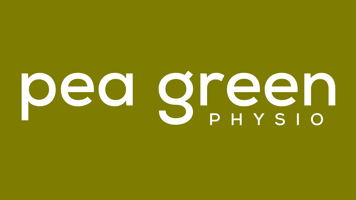Offering a fast, accurate diagnosis and effective monitoring of the healing process, the use of ultrasound technology is helping Cheltenham's Pea Green Physio speed up its patients' recovery from a range of musculoskeletal (MSK) injuries.
SoGlos chats to specialist MSK physiotherapist Wilson Mbutu about how it works, who can benefit and how the clinic is integrating it into its assessments and rehabilitation plans.
Wilson, tell us about
your role at Pea Green.
I’m a specialist musculoskeletal and neurological physiotherapist here at Pea Green Physio. My focus is on accurate diagnosis and effective treatment, using a combination of clinical testing and ultrasound imaging. Having trained in musculoskeletal ultrasound, I use it to guide treatment and monitor recovery - it’s a great tool for giving patients fast answers and targeted care.
I also offer radial shockwave therapy, which lets me treat conditions precisely after ultrasound diagnosis. Plus, I offer home visits alongside my regular clinic sessions on Wednesday mornings, Wednesday evenings, and Saturdays – making it easier for patients to fit treatment around their schedules.
Whether it’s a recent injury or a long-term issue, ultrasound helps me create a treatment plan that really fits the patient.
What is ultrasound and how does it work in physiotherapy?
Ultrasound involves high frequency sound. Using this sound, we're able to create a grayscale image that can give us a very clear idea of the body's soft tissues, as well as some of the hard tissues including bone. It allows us to assess muscles, tendons, ligaments, joints – not only as a picture, you can actually see some dynamic movement, too.
So for example, if you say to me 'it hurts when I do this certain movement', I can actually observe you doing the movement while looking within the tissues.
Who is it suitable for?
It's suitable for basically
anyone dealing with persistent or unclear musculoskeletal issues.
I see a wide range of conditions, including:
- Tendon injuries (Achilles tendinopathy, patellar tendinopathy)
- Muscle strains and tears
- Plantar fasciitis and ankle sprains
- Morton’s neuroma
- Ligament injuries (including knee collateral ligaments)
- Tennis elbow, golfer’s elbow
- Shoulder injuries (rotator cuff, biceps tendinopathy)
- Unexplained joint swelling
It's used for both acute and long term conditions – for example last week we had a very clear calf tear and I was able to view that nicely on the image; and then long term conditions like arthritis – I can't see within the bone of the joint, but we can definitely see the surrounding structures which tell us what might be going on within the deeper tissues.
It's excellent for monitoring healing over time. I can see the injury respond to the treatment; and we can monitor how the programme is affecting the injury as we go along.
How common is the use of ultrasound for musculoskeletal injuries in the UK?
It's actually quite underutilised in the NHS. It's mostly reserved for the domain of abdominal and breast imaging, i.e. the exact same technology used to scan babies in pregnant women.
It’s used more in private practice, during consultations with orthopaedic consultants and also by radiologists for ultrasound-guided injections.
Here at Pea Green, we're trying to integrate ultrasound into MSK assessments and the rehab plans because we want results fast, just like you!
How do patients go about getting an ultrasound diagnosis at Pea Green Physio?
If you know for sure that this is something you'll benefit from, you can just go ahead and book an ultrasound diagnostic scan appointment, which is a 60-minute session priced at £150. Alternatively, book an express injury assessment at 20 minutes, prices start from £45. Any clinician in the team can guide you as to whether ultrasound might be beneficial; and in the case that it is, they will refer you to me.
In this session, we will assess with normal clinical testing; we will scan, we'll discuss the findings, hopefully have a good diagnosis and prognosis; and we will start off the rehab process, all in that one visit.
How should patients prepare for their scan?
It's very
easy, you don't have to do anything special, you don't have to fast or anything
like that, like you would for other scans, just come appropriately clothed so
that I can access the body part in question. If you have any relevant past
medical history or other test results, please bring them with you.
How do I book?
We also have a really good patient care team. If you have any specific questions, feel free to reach out to them directly on 01242 420810 or email info@peagreenphysio.co.uk. Our friendly team will be happy to help you!




















